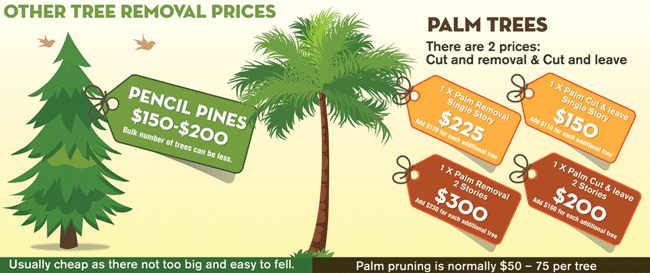The Future Of Trees: How To Determine When Removal Is Called For
The Future Of Trees: How To Determine When Removal Is Called For
Blog Article
Created By-Buckley Colon
If you've ever before questioned the destiny of the trees on your residential or commercial property, understanding when it's time for removal is essential. Yet exactly how do you figure out if a tree can be conserved or if removal is the only alternative? By looking for certain indicators and assessing safety dangers, you can make educated choices that benefit both your landscape and your surroundings. Allow's check out the essential elements that come into play when making a decision the fate of a tree and how you can guarantee the most effective end result for your green companions.
Indicators of Tree Decrease
If you see any one of the complying with indications of tree decline in your yard, it may be time to take into consideration tree elimination.
One common indication is dead or worn out branches, which can indicate underlying issues influencing the tree's wellness. Keep an eye out for discolored or shrivelled fallen leaves that persist despite having proper treatment, as this could be an indication of illness or pests.
An additional warning signal is too much leaning or an obvious shift in the tree's base, which may suggest origin issues or structural instability. Keep an eye out for fungal growth on the trunk or origins, as this can indicate rot and jeopardize the tree's stability.
Furthermore, if you observe huge cracks in the trunk or significant arm or legs, it's crucial to deal with these problems quickly to avoid possible dangers. Resolving these indications of tree decline without delay can help keep the security and aesthetics of your backyard atmosphere.
Security Worries
To guarantee the wellness of your property and those around you, prioritizing safety and security issues connected to trees is extremely important. Trees can present numerous safety dangers otherwise effectively maintained. Dead or worn out branches may drop all of a sudden, endangering individuals or destructive frameworks.
Leaning trees can additionally be hazardous, especially if they're leaning towards a building or power lines. Additionally, https://www.bhg.com/gardening/landscaping-projects/landscape-basics/award-winning-landscaping-tips/ with comprehensive root systems near foundations or underground utilities can cause significant damages with time.
It's vital to routinely examine your trees for any indications of potential threat. Keep an eye out for fractures in the trunk, huge dental caries, or indications of disease and decay. If you see any one of these concerns, it's best to consult with a professional arborist to assess the circumstance and determine the necessary strategy.
Taking proactive steps to address safety worries immediately can avoid accidents and property damages in the future. https://www.google.com/search?q=Precision+Timber+Felling&ludocid=14488364426700125656&lpsid=CIHM0ogKEICAgICru6zKAQ&source=sh/x/localposts/m1/1&lsig=AB86z5XDzNisBWY-O2yj3bksCBA3&shndl=-1&kgs=857edde0ca74e2e9 in mind, the security of your building and those around you should constantly be the leading concern when it involves tree maintenance.
Consulting an Arborist
When thinking about the health and wellness of your trees, seeking advice from an arborist is an important action. Arborists are trained professionals that focus on the treatment and maintenance of trees. They can examine the general wellness of your trees, recognize any concerns such as conditions or architectural issues, and give skilled recommendations on the most effective course of action.
By getting in touch with an arborist, you can obtain important insights right into the problem of your trees and identify whether removal is necessary. Arborists have the expertise and experience to review the risks related to maintaining a tree versus removing it. They can additionally supply assistance on alternate solutions, such as trimming, cabling, or bracing, to help maintain the tree whenever possible.
Furthermore, arborists can help you navigate any neighborhood guidelines or allows that might be required for tree elimination. Their experience can guarantee that the procedure is performed securely and in conformity with any kind of appropriate regulations.
Conclusion
In conclusion, when identifying whether trees can be conserved or if removal is needed, it is essential to consider signs of decline and security issues. Consulting an arborist for a thorough analysis is necessary in making the very best decision for the tree's health and wellness and possible hazards. Keep in mind, proactive care and timely action can assist maintain trees and protect against accidents.
